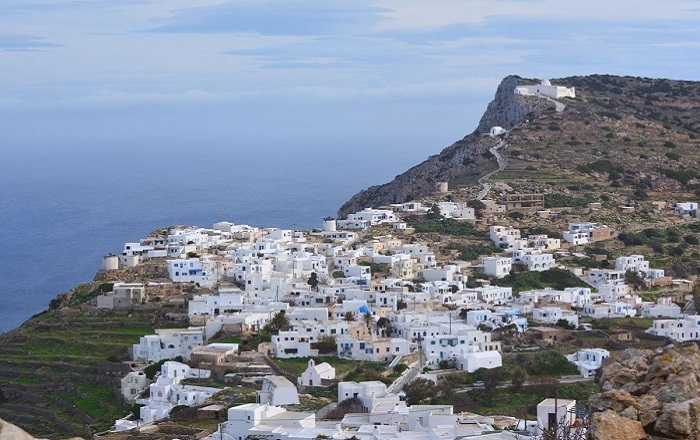
Sikinos
The small island of the southern Cyclades where time seems to have frozen, and its inhabitants maintain their traditional identity unchanged, is Sikinos. This island will impress you with its natural beauty. It is an authentically Cycladic landscape dominated by terraced fields with external crops, stone structures, numerous chapels, and, of course, stunning beaches with crystal-clear turquoise waters.
History of Sikinos
According to mythology, the name of Sikinos derives from Sikinos, the son of King Thoas of Lemnos. In antiquity, this island was called Oinoe due to its vineyards and the production of exceptional wine. In the 10th century BCE, Sikinos was inhabited by the Ionians, and in the 5th century BCE, the island came under the rule of the Athenians.
Sikinos followed the history of the Cycladic islands, enduring the dominion of the Romans, Byzantines, Venetians, and Turks. During the Venetian period, Sikinos fell under the Duchy of Naxos. In 1537, the island was conquered by the Turks, and in 1829, it was integrated into the rest of Greece.
Beaches in Sikinos
- Agios Ioannis: It is a very small and quiet beach on the southeast tip of the island. It doesn't have shade, but there is a well with drinkable water. Access is by a 3-4 kilometer hike from Episkopi.
- Dialiskari: Located north of Alopronia, it is a small beach with sand in a small cove. It is very beautiful, surrounded by high cliffs, and the beach is wide with plenty of shade from tamarisk trees. Access is difficult via a dirt road, and visitors should bring water and necessary supplies as there are no taverns nearby.
- Alopronia: The largest beach on the island, called Alopronia, is near the port. It is a family-friendly beach with golden sand and shallow waters that sparkle like crystals. There are a few umbrellas and plenty of shade from tamarisk trees. There are also restaurants nearby.
- Agios Georgios: Located on the eastern side of Sikinos, it is the second-largest beach on the island. It consists of a small bay with pebbles, sand, and crystal-clear waters, and there are tamarisk trees providing shade. There are rocks at the edges that are ideal for diving enthusiasts. It was named after the chapel of Agios Georgios located above the beach.
- Agios Panteleimon: This small beach is south of Alopronia and is known for its wild landscape. It has a beach with pebbles and large rocks, while the waters are crystal clear, and the seabed is rocky. There is a cave that provides shade. Access is by a path from the chapel of Agios Panteleimonas or by boat. Santorinika: This beach consists of two small coves with sand, pebbles, and crystal-clear waters. Near the beach is a small building where, in the past, they loaded cargoes onto Santorinian ships. Access is only via a footpath.
- Maltes: This beach is located at the northern tip of the eastern side of the island. Despite its remoteness, it impresses with its natural beauty. It is a natural harbor in a rocky bay with a shore composed of fine pebbles. It got its name from the Maltese pirates who used it as a port.
Sights in Sikinos
- Byzantine Era Exhibition: This exhibition is located in the square and is housed on the first floor of the Municipal building. It includes images from the Byzantine era. After the fall of Constantinople, many iconographers found refuge in Venetian-ruled Crete. In the 16th century, the Cretan School of Art was established, to which the icons in Sikinos belong. The exhibition operates during the summer months, while the rest of the year, the icons are placed in the Church of Panagia Pantanassa.
- Sikinos Folklore Museum: The folklore museum of Sikinos is located in the old olive press of the Margiti family. Here, you can explore the operation of old olive presses, their tools, and methods. The museum is located in the village.
- Church of Panagia Pantanassa: This church is located in the Castle square and serves as the cathedral of the island. It was built in 1787 and contains a gilded wooden iconostasis.
